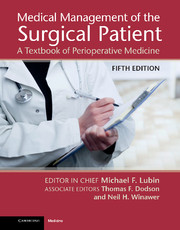Book contents
- Frontmatter
- Dedication
- Contents
- List of Contributors
- Preface
- Introduction
- Part 1 Perioperative Care of the Surgical Patient
- Part 2 Surgical Procedures and their Complications
- Section 17 General Surgery
- Section 18 Cardiothoracic Surgery
- Section 19 Vascular Surgery
- Section 20 Plastic and Reconstructive Surgery
- Section 21 Gynecologic Surgery
- Chapter 97 Abdominal hysterectomy
- Chapter 98 Vaginal hysterectomy
- Chapter 99 Uterine curettage
- Chapter 100 Radical hysterectomy
- Chapter 101 Vulvectomy
- Section 22 Neurologic Surgery
- Section 23 Ophthalmic Surgery
- Section 24 Orthopedic Surgery
- Section 25 Otolaryngologic Surgery
- Section 26 Urologic Surgery
- Index
- References
Chapter 98 - Vaginal hysterectomy
from Section 21 - Gynecologic Surgery
Published online by Cambridge University Press: 05 September 2013
- Frontmatter
- Dedication
- Contents
- List of Contributors
- Preface
- Introduction
- Part 1 Perioperative Care of the Surgical Patient
- Part 2 Surgical Procedures and their Complications
- Section 17 General Surgery
- Section 18 Cardiothoracic Surgery
- Section 19 Vascular Surgery
- Section 20 Plastic and Reconstructive Surgery
- Section 21 Gynecologic Surgery
- Chapter 97 Abdominal hysterectomy
- Chapter 98 Vaginal hysterectomy
- Chapter 99 Uterine curettage
- Chapter 100 Radical hysterectomy
- Chapter 101 Vulvectomy
- Section 22 Neurologic Surgery
- Section 23 Ophthalmic Surgery
- Section 24 Orthopedic Surgery
- Section 25 Otolaryngologic Surgery
- Section 26 Urologic Surgery
- Index
- References
Summary
In the late nineteenth and early twentieth century it was taught that vaginal hysterectomy could not be performed if the uterus was enlarged, but uterine size was never quantified. Other suggested contraindications included a ‘narrow vagina’ (pubic arch < 90°) and a diminished bituberous diameter (< 8.0 cm). The bituberous diameter represents the distance between the ischial tuberosities (or sitting bones) which are easily palpated when the patient is in the dorsal lithotomy position. Nulliparity and “a uterus that was too high or did not come down” were also considered as contraindications to the vaginal approach, as were “intra-abdominal conditions” such as endometriosis, adhesions, previous pelvic surgery, previous cesarean section, and chronic pelvic pain.
Hysterectomy became the second most common operation performed in the USA in the middle twentieth century, but the complications related to this operation were not re-evaluated until 1982. The Collaborative Review of Sterilization (CREST) from the CDC studied the complications of abdominal and vaginal hysterectomy. For operative indications that could have been performed by either route, abdominal hysterectomy had a complication rate twice that of the vaginal approach.
- Type
- Chapter
- Information
- Medical Management of the Surgical PatientA Textbook of Perioperative Medicine, pp. 654 - 656Publisher: Cambridge University PressPrint publication year: 2013

